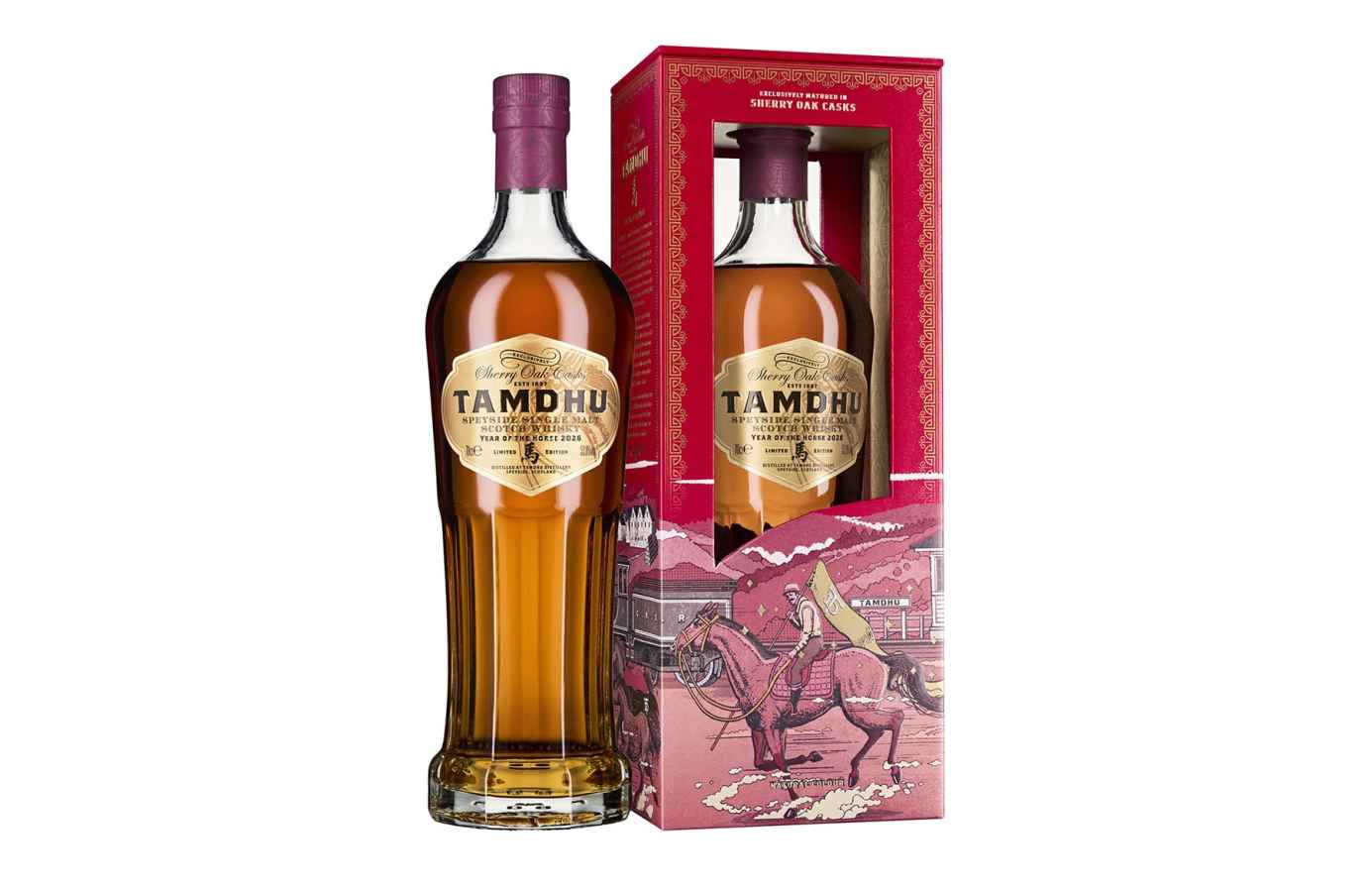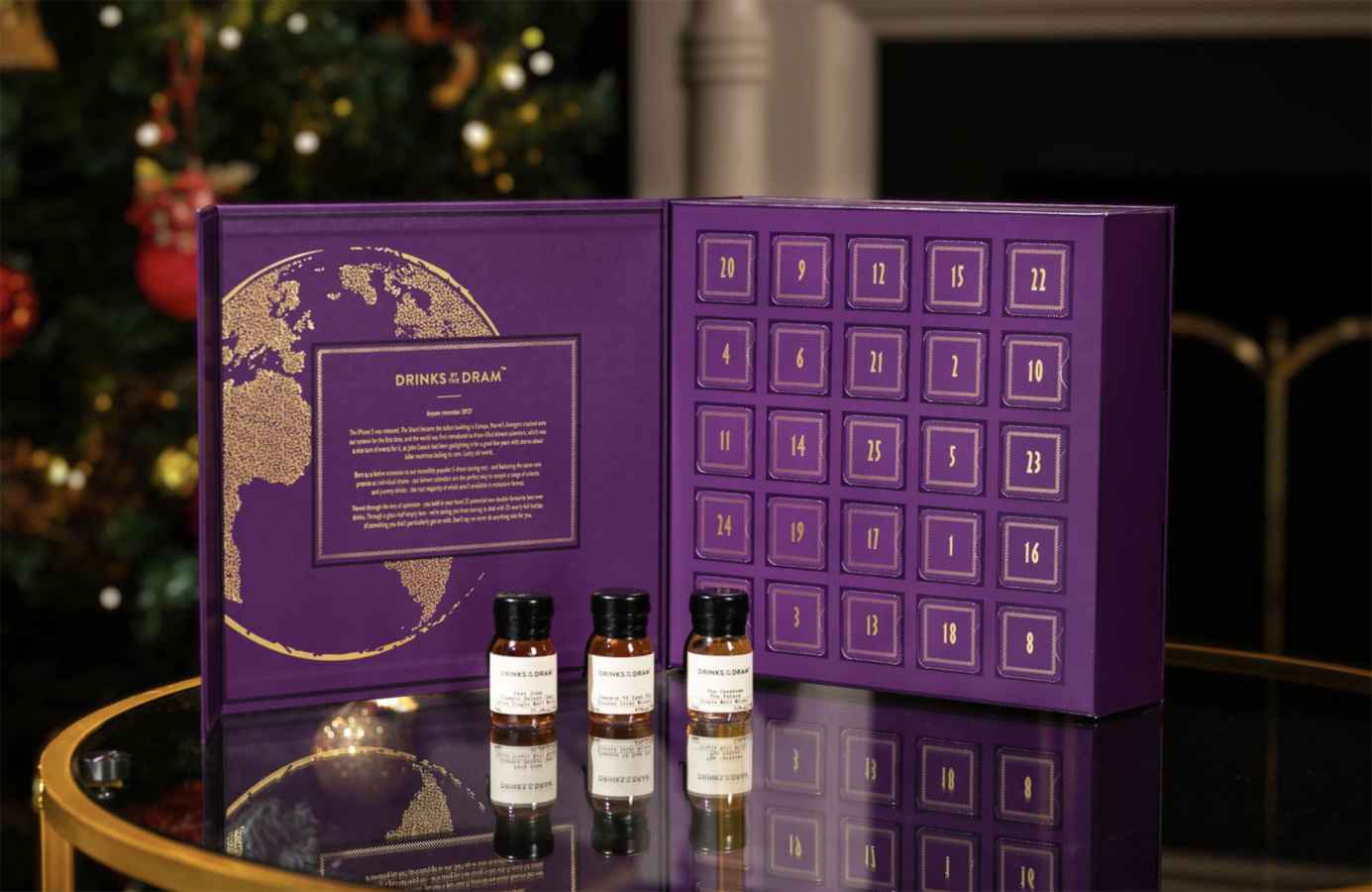Journeys in Cask and Character
Mosswood William Kidd
My whisky (and rum) selections below move across styles, regions and ideas, beginning with Mosswood’s Jamaican rum shaped by the life, and mythology, of William Kidd, before returning to Scotland for three very different views of Highland distilling: the quiet composure of Tomatin’s 18 Year Old Oloroso Sherry, the seasonal experimentation behind Cù Bòcan’s Creation #7, and Tamdhu’s sherry-led Year of the Horse release with its distinctive artwork by Page Tsou. To finish, the Drinks by the Dram World Whisky Advent Calendar offers a global snapshot of contemporary whisky making, a reminder of just how wide the landscape has become and how much there is still to explore.
Tomatin 18 Year Old Oloroso Sherry
There is a particular rhythm to the days after Christmas. The frantic lead-up is over, the wrapping paper has been sent to recycling, and the house falls into that softer, quieter mood, once your guests have left. It is in these moments that you can sit down, have a few hours to yourself and truly relax before the onslaught of work beckons you again. It is a time I like to catch up on reading (currently Butter by XXX) with a quality glass of whisky. This year it will be the Tomatin 18 Year Old Oloroso Sherry cask.
Located just south of Inverness, it grew from a modest 19th-century site into one of Scotland’s largest distilleries by the 1970s, supplying malt whisky to blenders around the world. That scale once defined it, but the modern era has been marked by a shift in focus: smaller volumes, higher standards and a clear identity built around a softer, fruit-forward house style.
Part of Tomatin’s appeal lies in its altitude and location. The distillery sits more than 300 metres above sea level, surrounded by forests and fed by the Allt na Frìthe spring. Its water source is naturally soft, which helps explain the approachable character that runs through the range. Even in its peated experiments (see Cù Bòcan below) or in its bolder limited editions, there is always something to get excited about it seems.
It is known for favouring long fermentation times, allowing esters and fruity compounds to develop before the spirit reaches a cask. Tomatin has long been known for a gentler Highland style, and this release shows how well that character responds to sherry influence.
The whisky spends its life moving between traditional oak casks and Oloroso sherry butts, a combination that deepens the natural flavours. The result is a balance of orchard fruit with mango and papaya, followed by old fashioned marmalade, cacao and warming spices that remind you of the past few days. It is comforting, delicious and worthy of quiet contemplation over a good book.
You can purchase the Tomatin 18 here
Cù Bòcan Creation #7 marks 20 years of peat at Tomatin
Tomatin is known for its gentle Highland style, but once a year the distillery shifts gears. As winter settles over the Monadhliath Mountains and the water temperature drops, the team produces a lightly peated spirit unlike anything else in the portfolio. It is a short, precise window in the distilling calendar that has taken place every year since 2005, and it is this seasonal ritual that gave rise to Cù Bòcan.
What began as a curiosity has evolved into a playground for Tomatin’s more experimental instincts. Cù Bòcan takes inspiration from the faintly peated spirit made at the distillery more than a century ago, but the modern series has built its reputation on unusual casks, surprising flavours and a willingness to step outside the traditional Highland script.
Creation #7 is the most striking chapter yet. Released to mark two decades of peated production at Tomatin, it brings together a pair of cask types: Pineau des Charentes Rouge and American virgin oak. The whisky was first matured in these individual casks before being brought together. I was sent some rhubarb and custard sweets to accompany it, which was a lot of fun, and did help to bring out the flavours.
Scott Adamson, blender and global brand ambassador, said the team sought something that felt both nostalgic and unexpected. Pineau Rouge is familiar to French drinkers but still unusual in whisky maturation, and its influence gives Creation #7 a distinctive profile that stands apart from previous releases. Tomatin’s track record with fortified wine casks in its French Collection helped guide the decision, and the resulting whisky shows how well the distillery’s seasonal peated spirit responds to this approach.
Production timing plays a quiet but important role. Cù Bòcan is distilled during the coldest weeks of the year, when the water flowing from the Allt na Frìthe spring is at its lowest temperature. Faster condensation in the stills leads to a subtly oilier new make, giving the whisky a textural depth that enhances the character drawn from both cask types.
Bottled at 46 per cent, natural in colour and non-chill filtered, only 3,000 bottles are available worldwide, with 1,400 allocated to the UK.
Tamdhu Year of the Horse
Tamdhu’s Year of the Horse release for 2026 has just been released and bottled at 53.8 percent and priced at £150. Only 300 bottles are available to the UK market, which means it will disappear quickly and almost certainly end up on the lists of collectors who follow these annual editions.
The whisky sits in the familiar octagonal Tamdhu bottle, but it is the presentation that sets the tone. The outer packaging is built around an illustration by Page Tsou, an artist known for detailed, characterful work. He was asked to capture the energy of the Year of the Horse, and the result shows a horse and rider passing the old Dalbeallie railway station at the distillery. The reds used for the design lean towards Chinese New Year.
The symbolism is deliberate. The horse is tied to perseverance and progress, qualities Tamdhu often highlights in its own story. Brand Director Iain Weir describes the whisky as one that reflects what the founders hoped to achieve when they established the distillery in 1897. He points to the natural colour and depth coming from sherry casks and time alone, and to the continued reliance on oloroso-seasoned casks from Jerez to shape every release.
There is also a nod to the idea of ambition for the year ahead. The imagery of the eight horses, common in Chinese culture, is used as a sign of encouragement, and the release feels positioned as a toast to that sentiment as much as to the whisky itself.
It has a nose of dried fruit, honey, hazelnuts and dark cherry. On the palate it has stem ginger, fig, vanilla ice cream and vintage marmalade. The finish is long, with the spice shining through. Wonderful!
Drinks by the Dram World Whisky Advent Calendar
Advent calendars have come a long way from cardboard doors and chocolate squares. For whisky drinkers, December now brings something far more rewarding: twenty-four drams from around the world, presented in a way that encourages genuine exploration rather than simple novelty. The Drinks by the Dram World Whisky Advent Calendar is one of the best examples of this. It gives whisky fans a chance to taste a broad sweep of global distilling without the guesswork or cost of buying full bottles, and it remains one of the most reliable introductions to international whisky each year.
Drinks by the Dram’s approach has always been about access. Every dram is a proper measure in one of their wax-sealed 30ml bottles, which keeps the focus firmly on quality rather than gimmicks. The selection changes annually, but the structure remains the same: established producers sit alongside lesser-known names, and the calendar usually moves between styles, regions and cask types with a sense of purpose. It is not a random assortment. It is curated to show what modern whisky looks like across continents.
World whisky is no longer a curiosity. Distilleries in countries once seen as outside the traditional whisky map now win major awards and influence drinking habits. This calendar reflects that shift. Japanese malts often sit shoulder-to-shoulder with Australian grain whiskies, Scandinavian producers, American rye experiments, Indian single malts and the newer wave of English distilleries. It means every day brings something different, but also something representative of a wider trend in contemporary whisky production.
The value lies in the education it offers. For many people, international whisky can feel overwhelming simply because it is unfamiliar. The calendar removes that barrier. You can taste widely, compare styles and follow your curiosity without leaving home. It also works well for people building tasting notes or sharpening their palate, because the variation from dram to dram keeps you engaged. You end up with a clearer sense of the differences between distilleries and regions, and what you personally enjoy.
Presentation is simple and smart, which suits the product. The box design changes slightly each year but the overall layout stays intuitive and tidy. Each dram is labelled clearly, and although tasting notes are available online, you can taste blind if you prefer and reveal the whisky afterwards, something many enthusiasts enjoy.
The World Whisky edition is a straightforward, enjoyable way to broaden your whisky knowledge over twenty-four days, and a reminder of just how global, ambitious and creative today’s whisky scene has become. There are multiple other versions also available, such as Bourbon and Scotch.
Secure your Calendar here
Mosswood Releases a Jamaican Rum with a Notorious Scottish Shadow
Scotland has produced its share of colourful figures, but few have been as dramatically misrepresented as William Kidd. Known to most as a pirate, he was, in truth, a government-sanctioned privateer who sailed under legal warrant and spent much of his career doing the Crown’s work. His downfall arrived not through brazen lawlessness, but through a perfect storm of politics, accusation and the enthusiastic testimony of colleagues keen to save themselves.
Kidd’s reputation was built on theatre as much as fact. He spent years cruising Caribbean waters and the routes favoured by ships returning heavy with goods from the Indies. His papers authorised him to seize those who defied English authority, yet plunder was clearly part of the appeal, and his appetite for it occasionally pushed him beyond the line that separated privateer from pirate. Some of the spoils he gathered came from wealthy merchants and well-connected gentlemen, which proved unhelpful once those same individuals decided he had become inconvenient.
When Kidd learned that warrants had been issued for his arrest, he fled to the American colonies. His attempt at laying low did not last. He was captured, shipped back to London and tried on charges of murder and five counts of piracy. The evidence against him came largely from his former associates, many of whom secured their own futures through well-timed cooperation.
He was hanged at Execution Dock in Wapping on 23 May 1701. In a final twist, the rope snapped. Kidd, now part of London folklore, became the only man of his kind to be hanged twice. To ensure the story carried far beyond the riverbanks, his body was displayed at Tilbury Point for three years as a warning to anyone tempted to follow in his wake.
That sense of drama sits neatly beside the release inspired by his legacy: a Jamaican rum built for those who enjoy a maritime tale with their glass. This edition brings together two rums distilled in Jamaica, one from first-fill bourbon barrels laid down in 2000 and the other from re-fill bourbon barrels from 2005. After long maturation they were finished in peated quarter casks, then finally married in re-fill butts.
The result is a 19-year-old rum bottled in a run of only 600 worldwide at £90 from Torabhaig.














